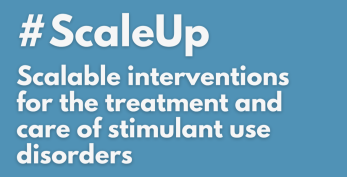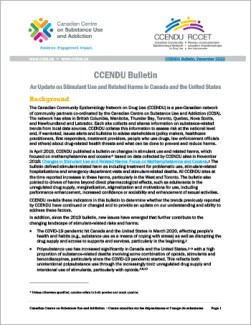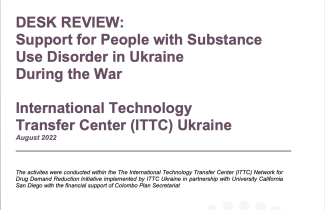
Search
Evaluation

Black girls and referrals: racial and gender disparities in self-reported referral to substance use disorder assessment among justice-involved children
Background
There is a higher prevalence of substance use disorder (SUD) among justice-involved children (JIC). It is critical to ensure that JIC who report current use are referred for SUD assessment and potentially life-saving treatment...
Disruptions to U.S. local public health’s role in population-based substance use prevention and response during COVID-19
Background
COVID-19 dramatically limited the scale and scope of local health department (LHD) work, redirecting resources to the response. However, the need for essential public health services—including substance use prevention—was not...
Experiences of frontline healthcare workers and their views about support during COVID-19 and previous pandemics: a systematic review and qualitative meta-synthesis
Background
Healthcare workers across the world have risen to the demands of treating COVID-19 patients, potentially at significant cost to their own health and wellbeing. There has been increasing recognition of the potential mental health...
The Canadian Community Epidemiology Network on Drug Use (CCENDU) Bulletin: An Update on Stimulant Use and Related Harms in Canada and the United States
The Canadian Community Epidemiology Network on Drug Use (CCENDU) is a pan-Canadian network of community partners co-ordinated by the Canadian Centre on Substance Use and Addiction (CCSA). The network has sites in British Columbia, Manitoba...
Understanding injecting drug use in Afghanistan: A scoping review
Background
Several reports have described a growing prevalence of illicit drug use in Afghanistan, with recognition of a recent shift from traditional modes of consumption involving inhalation and oral ingestion to injecting drug use.
Obj
...Correlates of treatment engagement and client outcomes: results of a randomised controlled trial of nabiximols for the treatment of cannabis use disorder
Introduction and aims
There is increasing interest and evidence for the use of cannabinoid medications in the treatment of cannabis use disorder, but little examination of the correlates of successful treatment. This paper is a secondary...
Disruptions to U.S. local public health’s role in population-based substance use prevention and response during COVID-19
Background
The COVID-19 emergency has tested the public health, medical, and public safety infrastructure of the United States (U.S.) in unprecedented ways. As the focal point for public health in their communities, local health...
INL DDR Partners Call - Quality Assurance
This month on November 9th, 2022, the International Narcotics and Law Enforcement Affairs (INL) DDR Partners meeting offered a discussion on quality assurance and included two presentations:
- Building Quality Improvement for SUD Treatment...
Avoidance, Anxiety Towards Parents, and Self-Acceptance of Adolescents in the System of Higher Secondary Education
BACKGROUND:
A close relationship between a parent and a child and parental acceptance can mediate the appropriate self-acceptance of an adolescent, which is an important variable related to personality and a pillar of emotional health. In...
General Principles of Contingency Management for Smoking Cessation
Contingency management (CM) is a psychological treatment based on operant conditioning. It consists of providing incentives in exchange for achieving a target behaviour such as abstinence or other treatmentrelated variables (e.g. session...
Effect of Propylene Glycol and Vegetable Glycerine Ratio in E-Liquid on Aerosol Formation: Overview of Relevant Properties
BACKGROUND:
Electronic nicotine delivery systems (ENDS) generate an aerosol by vaporising e-liquids that usually consist of propylene glycol (PG), vegetable glycerine (VG), and other ingredients (water, nicotine, and flavours). The...
Substance Use and the Role of Families. Results of a Cross-Country Study in Pakistan, Kazakhstan, and Ukraine
BACKGROUND:
In many countries families have rarely been involved in addressing treatment and interventions for family members with substance use disorders (SUDs). The aims of this study were to measure the influence of substance use on...
Contribution of SocioDemographic and Structured Leisure Activities’ Characteristics to Adolescents’ Alcohol Use
BACKGROUND:
Leisure can be a context that can promote positive adolescent development, but it can also be a context that contributes to adolescents engaging in risk behaviours.
AIMS:
The aim of this study is to determine the extent to...
Global Adult Tobacco Survey (GATS)-SA: Implementation, Results, and Implications for Policy
DESK REVIEW: Support for People with Substance Use Disorder in Ukraine During the War
Summary
War in Ukraine has inevitably led to the country's health system functioning at reduced capacity. Attacks near hospitals and active military operations force people to change their place of residence and flee from the war to safer...
Update of Canada’s Low-Risk Alcohol Drinking Guidelines: Final Report for Public Consultation
Canada’s Low-Risk Alcohol Drinking Guidelines were originally published by CCSA in November 2011 and were the result of the work of alcohol research experts in Canada. Since then, substantial new research on the association between alcohol...
European Web Survey on Drugs 2021: Emerging findings in Lebanon
The European Web Survey on Drugs1 collected data during March and May 2021 from people who use drugs, are aged 18 or older, and live in 21 EU and 9 non-EU countries including Lebanon. In this period, the populations in many European and...
Interdisciplinary collaboration in the treatment of alcohol use disorders in a general hospital department: a mixed-method study
Background
In somatic health care settings, interdisciplinary collaborations (where various disciplines work coordinated and interdependently toward shared goals) are considered to yield higher team effectiveness than multidisciplinary...
Perspectives of service providers on aftercare service provision for persons with substance use disorders at a Rural District in South Africa
Background
Aftercare programs for people with substance use disorders (PWSUD) are frequently challenged with a number of overlapping obstacles, including uncertain policy consequences and a lack of resources. Despite demographic variety...
Improving equity and access to buprenorphine treatment through telemedicine at syringe services programs
Background
In the United States, access to buprenorphine remains low and disparities regarding who receives treatment have emerged. Federal laws have regulated buprenorphine delivery, ultimately limiting its implementation more broadly...
Share the Knowledge: ISSUP members can post in the Knowledge Share – Sign in or become a member






